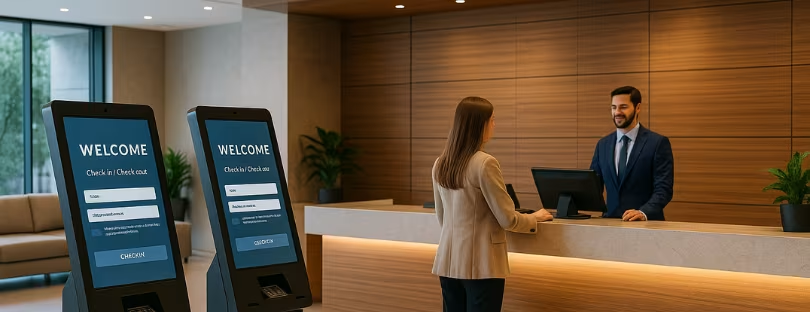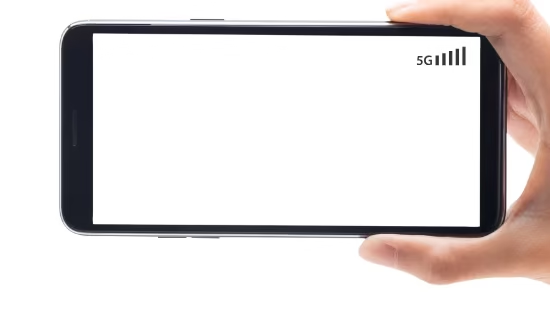
Hotel PMS Market Set to Triple by 2031: How Cloud Tech and Guest Demands Are Reshaping Hospitality
If you’ve ever stayed in a hotel where check-in felt like it took forever, housekeeping wasn’t in sync with the front desk, or the bill at checkout had mysterious extras — you’ve experienced what happens when hotel operations don’t flow smoothly. Behind the scenes, one system is often at the heart of making sure everything runs like clockwork: the Property Management System (PMS).
Think of it as the hotel’s brain. It keeps track of reservations, room availability, housekeeping schedules, payments, guest profiles, and increasingly, even the mobile apps or kiosks guests use to check themselves in. In the past, these systems were clunky, expensive, and often limited to big chains with IT departments to match. Smaller hotels relied on manual processes or basic software that couldn’t keep pace with the evolving expectations of their guests.
Fast forward to today, and the picture looks completely different. The hospitality industry is undergoing a massive digital transformation. Guests want faster, smoother, and more personalized service. Hotel owners seek efficiency, cost savings, and improved methods for managing multiple properties. And technology providers are stepping in with solutions that are smarter, more flexible, and cloud-based.
That’s why the PMS market is exploding. According to a new report by Valuates, the global PMS market is expected to nearly triple in size — from USD 2.5 billion in 2024 to around USD 7.3 billion by 2031, with a 16.8% CAGR over the forecast period.
But this isn’t just another growth forecast to skim and forget. The rise of PMS platforms says a lot about where hospitality as an industry is headed — and it impacts everyone from boutique hoteliers trying to compete with giants, to global chains redefining luxury through digital touchpoints.
So what exactly is fueling this rapid growth? And why should hotel operators, tech providers, and even frequent travelers care? Let’s break it down.
What’s Driving the Surge
Here are the key forces propelling the PMS market forward — not just in raw demand, but in how hotel operations are being re-imagined.
1. Guest Expectations Are Changing — Fast
People now expect seamless, personalized, contactless experiences. Whether it’s arriving at a self-check-in kiosk, using a mobile app to unlock the room, or getting room service via chatbots — these weren’t “nice-to-have” things a few years ago. Now they’re table stakes. PMS platforms are evolving to plug into all kinds of guest-facing technologies and data so that hoteliers can deliver more than just a room — they can deliver an experience.
2. Cloud-Based Systems: Flexibility & Scale
Cloud PMS platforms are a huge part of the story. Why? They offer scalability, lower upfront costs, easier updates, remote access, and more seamless integration with third-party tools (booking engines, payment gateways, etc.). For smaller hotels or hotel chains spread across geographies, this is especially appealing. You don’t need a huge internal IT department.
3. SMEs (Small & Medium-Sized Enterprises) Leaning In
In order to keep up with the big chains (which often have big budgets and sophisticated systems), smaller hotels are no longer standing still. Many are investing in more modern PMS platforms that allow them to automate front-desk operations, housekeeping, bookings, invoicing, guest services, etc., all from one dashboard. When every operation counts and margins are tight, efficiency matters.
- Integration & Real-Time Data
It’s painful when the booking channel says a room is available, but the PMS hasn’t updated, or housekeeping isn’t synced with front desk. Modern PMS platforms are reducing friction by integrating with channel managers, revenue-management tools, guest messaging systems, etc. Real-time updates across systems mean fewer mistakes, better pricing, and happier guests.
- Front Desk & Back-Office Automation
Automating check-in/check-out, guest profiles, room availability, housekeeping workflows — all these are classic time sinks. With efficient PMS platforms, you reduce manual tasks, reduce errors, and free up staff to focus on things guests actually care about (service, experience). Plus, these systems are adding in upselling tools, loyalty modules, promotions etc., to help increase revenue per guest.
Cloud vs On-Premise: Where Each Fits
An important nuance in the PMS market is that both cloud-based and on-premise solutions remain relevant. They serve different needs, and many providers are offering hybrid models or migrations between the two.
- Cloud-based solutions are winning in many places because of their flexibility, scalability, easier maintenance/updates, and lower infrastructure demand. If you have good internet connectivity and value agility, this is likely where you go.
- On-premise still has its place — especially for large hotel chains with high regulatory or data-privacy demands, or in regions with unreliable internet connectivity. If customization, control, and local compliance are priorities, on-premise might still be the safer bet.
Who’s Leading & Which Regions Are Hot
Knowing who the big players are, and which markets are heating up, helps understand where the action is.
Key vendors mentioned include: Cloudbeds, Guesty, WebRezPro, DJUBO, StayNTouch, SkyTouch, innRoad, Oracle OPERA, Preno, Mews, Maestro PMS, and Hotelogix.
Regional dynamics:
- North America is a mature market with strong technology awareness, good infrastructure, and high expectations. It’s driving adoption of cloud platforms and advanced features.
- Europe is steady, especially in the UK, Germany, and France — areas with rising demand for personalization, sustainability, and regulatory compliance.
- Asia-Pacific is one of the fastest-growing regions, thanks to rising tourism, hotel chain expansion, digital transformation push, large number of emerging markets, and less “legacy tech” baggage in some places.
What This Means for Hoteliers & Tech Players
If you’re in the hotel business or building tech for it, there are several implications worth considering.
For hoteliers:
- Don’t get left behind. Upgrading or switching PMS now isn’t just about catching up — it’s about meeting guest expectations.
- Think strategically about integration: your PMS should play nicely with revenue management, guest communication, mobile/IoT, and loyalty systems.
- Assess your infrastructure: if internet is spotty, or regulatory/compliance issues are strict, an on-premise or hybrid approach may make sense.
- Look at operational data: modern PMS platforms give you analytics; you can use them to reduce no-shows, optimize room pricing/occupancy, improve labour scheduling, etc.
For PMS & tech vendors:
- Modular and scalable solutions are increasingly desirable. Vendors that can serve both SMEs and large chains with flexible offerings (cloud, hybrid, on-prem) are going to have an edge.
- User experience & UX matter. A clunky, difficult-to-use PMS is going to be less attractive as alternatives proliferate.
- Innovation around guest-centric features: mobile check-in, contactless services, and AI-driven personalization. These help differentiate.
- Data security, privacy, and compliance are essential. In many markets, guests care (and laws require) the protection of personal data.
Possible Challenges & What to Keep An Eye On
It isn’t all smooth sailing. Growth is strong, but there are potential bumps in the road.
- High switching costs/legacy inertia: Hotels that have deeply embedded on-premise systems, or customized workflows, may resist change because migrating data, training staff, and adjusting processes is a lot of work.
- Connectivity issues: In some parts of the world, internet reliability or speed may limit cloud adoption or degrade performance.
- Cybersecurity & compliance concerns: As PMS becomes more interconnected, risk surfaces increase. Data breaches, GDPR (in Europe), local privacy laws, etc., pose real threats and potential liabilities.
- Fragmentation & compatibility: A PMS that doesn’t work well with booking engines, channel managers, payment gateways, guest messaging, etc., will increasingly be at a disadvantage. So standardization (or good APIs) matter.
Big Picture: Where the Market Might Be Heading
To put it all together, here are some trends likely to define the Hotel PMS market beyond 2031 (and maybe even earlier):
- AI and predictive analytics will increasingly be integrated—suggesting upsell opportunities, anticipating guest needs, optimizing staffing.
- More mobile-first or mobile-only guest interactions—think check-in, room control, concierge communication via apps.
- Sustainability features may become built-in (e.g. energy management, environmentally friendly amenities, guest preferences for green/low-impact services) as guests and regulators push hotels in that direction.
- Remote management & multi-property control will grow, especially for hotel groups, franchisors, or owners managing properties across regions.
- Hybrid solutions (cloud + some local/offline fallback) will become more common to address connectivity/reliability/security trade-offs.
Conclusion: The PMS Market’s Real Edge
The growth of hotel PMS isn’t happening in a vacuum. Compared with the broader hospitality software sector, which is growing at ~6–7% CAGR, PMS is expanding at more than double the pace — a clear sign that hotels now view it as a strategic driver rather than back-office plumbing.
Global players like Oracle OPERA and Mews are racing against agile challengers such as Cloudbeds and Guesty, with the winners distinguished by cloud readiness, open APIs, mobile guest features, and strong integrations. HotelTechReport rankings consistently show that ease of deployment and ecosystem fit matter as much as raw features.
Regionally, growth isn’t uniform. Europe’s PMS market, for instance, is forecast to grow at ~7% CAGR, far slower than Asia-Pacific, where digital adoption and tourism expansion fuel double-digit gains. This underscores that operators can’t take a “one-size-fits-all” approach.
The bottom line: PMS is shifting from being just a booking and billing tool to becoming the hotel’s digital backbone. Those who adopt systems that are cloud-flexible, API-driven, and guest-centric will stay ahead; those clinging to legacy setups risk losing both efficiency and guest loyalty.










